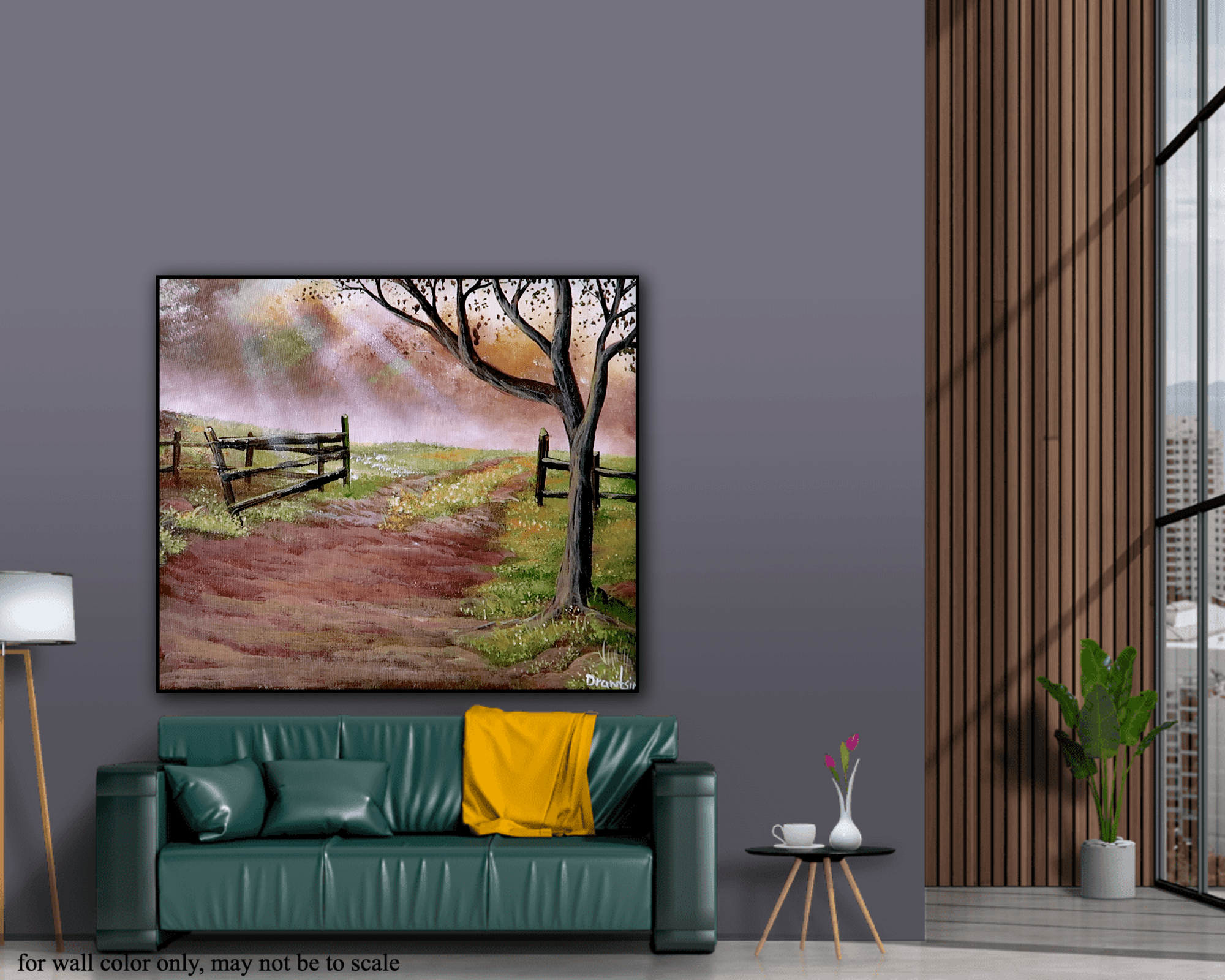Building A Living Fence: A Step-by-Step Tutorial

Table of Contents
Planning Your Living Fence
Before you even grab a shovel, careful planning is crucial for a successful living fence. This involves selecting the right plants, designing the layout, and preparing the site.
Choosing the Right Plants
Plant selection is paramount for a thriving living hedge or living wall. Consider these factors:
- Climate: Choose plants that thrive in your specific hardiness zone. Consider average rainfall, temperature extremes, and potential for frost damage.
- Soil Type: Test your soil to determine its pH and composition. Amend the soil as needed to match the requirements of your chosen plants. Sandy soil will require more frequent watering than clay soil.
- Desired Height: Decide how tall you want your living fence to be. This will dictate the plant species you select. Some plants grow quickly to significant heights, while others are naturally shorter.
- Maintenance Levels: Consider your time commitment. Some plants require minimal pruning, while others need regular maintenance to maintain their shape and size.
Evergreen vs. Deciduous: Evergreen plants provide year-round screening, while deciduous plants offer seasonal color changes.
Fast-growing vs. Slow-growing: Fast-growing options provide quick results but may need more frequent pruning. Slow-growing varieties require more patience but often need less maintenance in the long run.
Drought-Tolerant Species: In drier climates, selecting drought-resistant plants will save you time and water.
Thorny Plants for Security: For added security, consider incorporating thorny plants like hawthorn or pyracantha into your living barrier.
Research plants suitable for your specific region and soil conditions. Local nurseries can offer expert advice and recommendations tailored to your area.
Designing Your Fence's Layout
Visualize your living fence before you begin planting. Consider these design elements:
- Straight Line vs. Curved Design: A straight line creates a formal look, while a curved design can soften the landscape and add visual interest.
- Incorporating Different Plant Types: Mix and match different plants for variety in texture, color, and height. Consider contrasting foliage or flowering plants for a visually appealing natural fence.
- Planning Access Points: Ensure you leave enough space for gates or access points if needed.
Sketch a plan to visualize your living fence and ensure proper spacing between plants. Accurate spacing is vital for healthy growth and prevents overcrowding.
Preparing the Site
Proper site preparation is key to a healthy and successful living fence. This includes:
- Removing Weeds and Debris: Clear the area of all weeds, rocks, and other debris. This prevents competition for nutrients and ensures proper root development.
- Testing Soil pH: Use a soil testing kit to determine the pH level of your soil. Most plants thrive in a slightly acidic to neutral pH range (6.0-7.0).
- Adding Compost or Other Soil Amendments: Amend the soil with compost, manure, or other organic matter to improve drainage, aeration, and nutrient content.
Well-prepared soil is crucial for healthy plant growth. Amend the soil based on the specific needs of your chosen plants.
Planting Your Living Fence
Once your planning is complete, it's time to get your hands dirty and start planting.
Planting Techniques
Follow these steps for successful planting:
- Digging Appropriate-Sized Holes: Dig holes twice as wide and as deep as the root ball of your plants. This allows for proper root expansion.
- Planting at the Correct Depth: Plant the seedlings at the same depth they were growing in their containers. Planting too deep or too shallow can hinder growth.
- Watering Thoroughly After Planting: Water deeply after planting to help settle the soil and encourage root establishment.
- Mulching Around the Plants: Apply a layer of mulch around the base of the plants to retain moisture, suppress weeds, and regulate soil temperature.
Follow the specific planting instructions for each plant type. Consistent watering is essential during the establishment phase.
Choosing the Right Supports
For many plants, particularly climbers or those intended for taller living fences, support structures are essential.
- Types of Stakes and Trellises: Use sturdy stakes, trellises, or other structures to support your plants as they grow. Consider using biodegradable materials where possible.
- Securing Supports Firmly into the Ground: Ensure supports are securely anchored into the ground to prevent them from tipping over.
- Attaching Plants to Supports: Gently tie plants to the supports using soft material to avoid damaging the stems.
Supports are especially important for fast-growing, climbing plants, helping them reach their desired height and shape.
Maintaining Your Living Fence
A little regular maintenance will keep your living fence looking its best.
Watering and Fertilizing
Consistent watering and fertilization are crucial for healthy growth:
- Regular Watering Schedule: Water deeply and less frequently rather than shallowly and often. Adjust your watering schedule based on weather conditions and soil type.
- Choosing the Right Fertilizer: Use a balanced fertilizer specifically formulated for shrubs or hedges.
- Applying Fertilizer According to Instructions: Follow the manufacturer's instructions carefully to avoid over-fertilizing.
Overwatering can lead to root rot, while under-watering will stunt growth. Find the right balance for your plants and climate.
Pruning and Shaping
Regular pruning is essential to maintain the desired shape and size of your living fence.
- Timing of Pruning: The best time to prune depends on the plant species; however, late winter or early spring is often ideal.
- Techniques for Pruning Different Plant Types: Research the proper pruning techniques for each plant in your living hedge.
- Removing Dead or Diseased Branches: Remove any dead, damaged, or diseased branches to maintain the health of your fence.
Proper pruning encourages denser growth and prevents the fence from becoming overgrown and unkempt.
Pest and Disease Control
Be vigilant in monitoring your living fence for pests and diseases:
- Common Pests and Diseases: Research common pests and diseases in your area and learn how to identify them.
- Preventative Measures: Practice good sanitation by removing fallen leaves and debris to prevent disease.
- Organic Control Methods: Consider using organic pest control methods before resorting to chemical pesticides.
Early detection and treatment are crucial for preventing widespread damage to your living fence.
Conclusion
Building a living fence is a rewarding project that creates a beautiful and functional landscape feature. By carefully planning, planting, and maintaining your living fence, you'll enjoy years of natural beauty and increased property value. Remember to choose plants appropriate for your climate and soil, and don't hesitate to seek advice from local nurseries or gardening experts. Start building your dream living fence today and transform your property into a vibrant, eco-friendly oasis!

Featured Posts
-
 Jw 24 Klmat Alshykh Fysl Alhmwd Bmnasbt Eyd Astqlal Almmlkt Alardnyt Alhashmyt
May 29, 2025
Jw 24 Klmat Alshykh Fysl Alhmwd Bmnasbt Eyd Astqlal Almmlkt Alardnyt Alhashmyt
May 29, 2025 -
 Putin Criticism From Trump Russias Dismissal As An Emotional Reaction
May 29, 2025
Putin Criticism From Trump Russias Dismissal As An Emotional Reaction
May 29, 2025 -
 Wordt Arne Slot De Nieuwe Trainer Van Ajax
May 29, 2025
Wordt Arne Slot De Nieuwe Trainer Van Ajax
May 29, 2025 -
 Seattle Pioneer Square Shooting Three Dead Police Investigate
May 29, 2025
Seattle Pioneer Square Shooting Three Dead Police Investigate
May 29, 2025 -
 Schietpartij Venlo Man Vindt De Dood
May 29, 2025
Schietpartij Venlo Man Vindt De Dood
May 29, 2025
Latest Posts
-
 Kyonigsberg 1945 Blagoveschenskaya Tserkov Operatsiya I Figura Karpova
May 30, 2025
Kyonigsberg 1945 Blagoveschenskaya Tserkov Operatsiya I Figura Karpova
May 30, 2025 -
 Tolyatti Otkrytiy Seminar Russkoy Inzhenernoy Shkoly
May 30, 2025
Tolyatti Otkrytiy Seminar Russkoy Inzhenernoy Shkoly
May 30, 2025 -
 Blagoveschenskaya Tserkov I Kyonigsberskaya Operatsiya Issledovanie Uchastiya Karpova
May 30, 2025
Blagoveschenskaya Tserkov I Kyonigsberskaya Operatsiya Issledovanie Uchastiya Karpova
May 30, 2025 -
 Rol Karpova V Kyonigsberskoy Operatsii Istoriya Blagoveschenskoy Tserkvi
May 30, 2025
Rol Karpova V Kyonigsberskoy Operatsii Istoriya Blagoveschenskoy Tserkvi
May 30, 2025 -
 Russkaya Inzhenernaya Shkola Otkrytiy Seminar V Tolyatti
May 30, 2025
Russkaya Inzhenernaya Shkola Otkrytiy Seminar V Tolyatti
May 30, 2025
